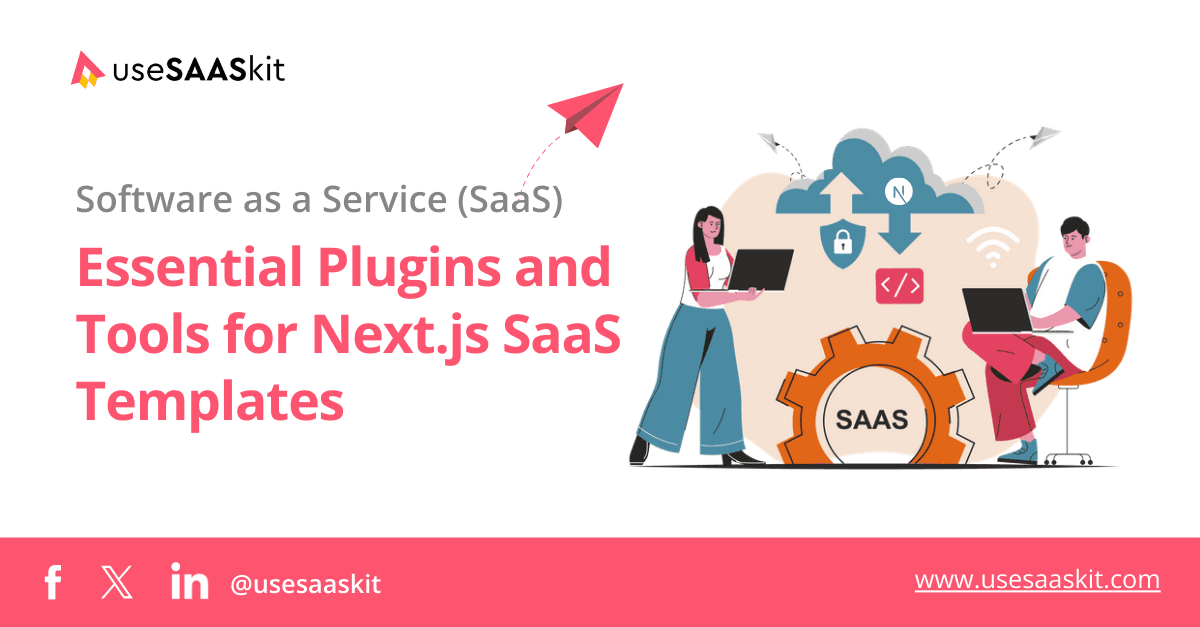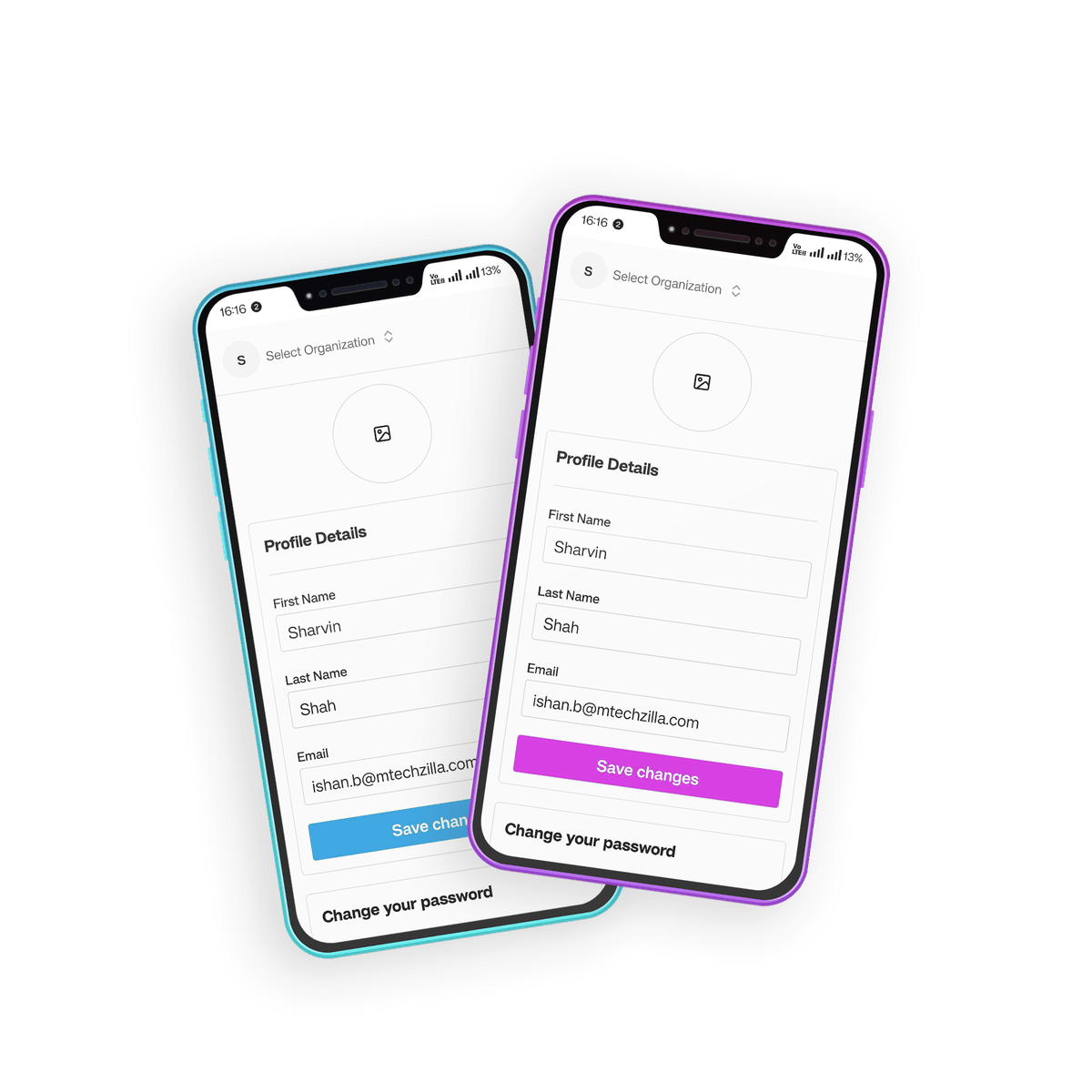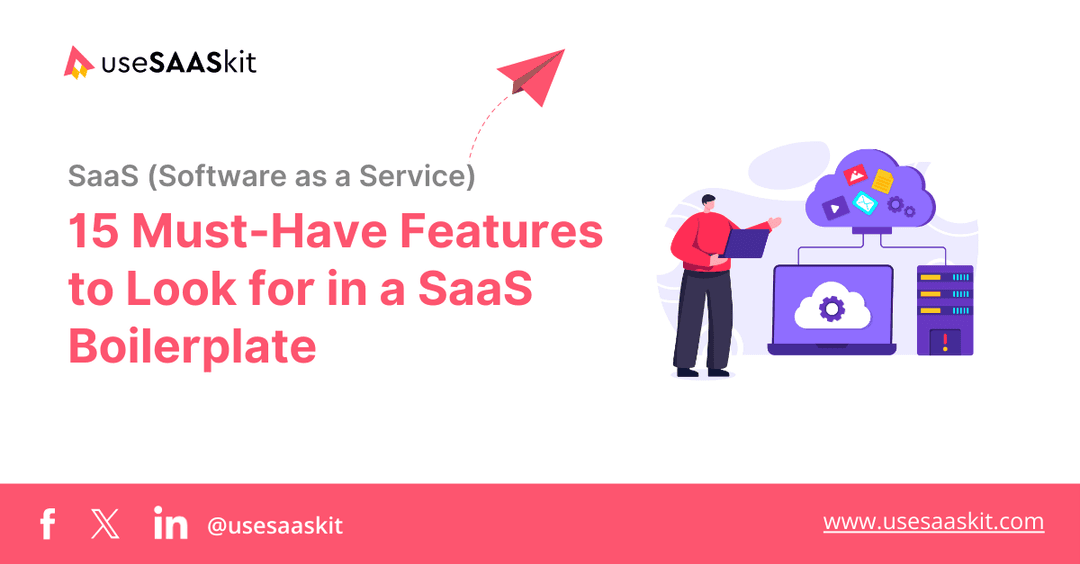Friday, 27 Dec 2024
10 min read
Essential Plugins and Tools for Next.js SaaS Templates

Now, you have made up your mind. Make something called SaaS (Software as a Service) work in the world of today, where competition is so fiercely determined in terms of the delivery of products and services. Develop it as a user-friendly scalable performance in terms of actions. This goes for every person: either an independent one-man show or a small startup team. It is one of the supreme weapons in the toolkit of a developer for modern SaaS applications. This is software that is built with performance in mind because any application aspiring to attract customers and retain them must perform. But give even the best framework a little bit of plugins and tools to make it shine.
This is the article that will guide you endlessly into understanding and knowing how to go about all essential plugins and tools into your perfect Next.js SaaS template. We dock into the most significant tools and plugins that will add to your app experience in terms of functionality and performance and scalability benefits. Whether it is our SEO improvement or better authentication, we are there.
Also explored is how the one-stop shop of a Next.js boilerplate - UseSAASkit - bundles these plugins and tools to make setting up your SaaS an even smoother process.
Let's get to it, and by doing so, we will share the top plugins and tools that you should think about adding to your Next.js SaaS template.
Table of Contents:
- Performance Optimization Plugins
- SEO Plugins and Tools for Next.js
- User Authentication and Security Tools
- Form Handling and Data Management
- Error Tracking and Debugging Tools
- UI/UX Enhancement Plugins
- Deployment and Hosting Tools
- How UseSAASkit Integrates Essential Plugins and Tools
- Conclusion
- FAQs
Performance Optimization Plugins
When it comes to building a SaaS application, performance is the determining factor between success and failure. A slow application leads to bad user experiences, which usually result in greater bounce rates, poor customer retention, and ultimately lower revenue. Next.js has some internal performance optimization features, but it is the additional plugins and tools that will take you one step further in performance quality from your app.
Next.js Image Optimization Plugin
It's images more than anything else that will make or mar the performance of your site. Large and unoptimized images can slow down the loading time of your pages considerably, especially on mobile devices where downloads may be slower. The Next-Image Optimization Plugin of Next.js automatically optimizes images through their delivery, based on the user's device, in the best possible format and size. This greatly benefits application end users, as it not only improves loading time but also provides better experiences with heightened SEO.
React Query for Data Fetching
SaaS applications mainly perform heavy data fetching from APIs or databases. React Query is a package for processing data fetching, caching, synchronization, and error handling in a way that proves as much beneficial as possible to the application developers. With React Query, the server load can be reduced, response time improved, and data consistency within the application ensured. Finally, it maintains the performance on the client-side view by caching results instead of making unnecessary API calls.
Bundle Analyzer
When you are developing a SaaS application, you need to handle the size of the JavaScript bundles to make them load quickly. The Bundle Analyzer tool from Next.js helps one visualize the app bundle and find large or unused dependencies in order to optimize the bundle size and speed up the application's load time.
SEO Plugins and Tools for Next.js
Search engine optimization (SEO) is an essential activity for improving organic traffic to your SaaS application. If you are not that effective in SEO, even with the best product, your website may still be virtually unnoticed. Luckily, Next.js comes with some good out-of-the-box SEO features while a few plugins can further make the process easier and more effective.
Next SEO
Next SEO is a must-have for your SEO effort on Next.js applications. Everything from titles, descriptions to structured data has been made easy to handle with Next SEO when it comes to managing your SEO metadata. Next SEO makes sure that you have pages in your SaaS app well optimized for search engines without needing to worry about adding metadata manually for each page. This plugin has support for custom meta tags, Open Graph tags, Twitter card data, and JSON-LD schema. Thus all bases are covered for search engines and social media sites.
React Helmet
In case one needs flexibility in handling metadata, React Helmet is a good plugin for dynamically updating the HTML head tags which can create titles, descriptions, and meta tags that are page-specific without writing a code for every individual page. It ensures proper indexing and structuring of your app content for search engines.
Sitemap Plugin
Having a sitemap created and submitted to search engines is important in helping those search engines index your site well. The Next.js Sitemap Plugin creates a sitemap automatically for your app that includes all of your URLs; it ensures easy findability and crawlability through Google and other search engines, thus achieving a positive impact on search rankings.

User Authentication and Security Tools
Out of all the possible priorities from a software as a service application, user authentication and security top the lot. Sensitive data is usually entrusted by your users to your business system; hence it is your responsibility to ensure that data is kept confidential. Built-in authentication services in Next.js do not exist, but it is easy to implement these kinds of secure login systems with various effective tools.
NextAuth.js
NextAuth.js- is a particular simple yet flexible Authentication library for your Next.js app. With NextAuth.js you can build your app with access to all kinds of social logins (including Google and Facebook) or email, managing sessions and security tokens. NextAuth.js frees you from complex authentication concerns and allows you to build features faster.
Auth0
Another powerfully invoked solution for authentication in your web applications is Auth0. This means that you can enable your web application to have your enterprise security into the user authentication system. Auth0 consists of various authentication providers, such as social sign-in, passwordless login, and others. You still manage your users, roles, and permissions. What's more about it is that it simply integrates with Next.js-all these points make it the best option for any developer looking for the best implementable authentication features.
Helmet.js
This middleware will help secure your Next.js app by adding security headers, which protects the application from known vulnerabilities such as cross-site scripting (XSS) or clickjacking. Thus, with the help of Helmet.js, you can secure your application from all these attacks and improve its security.
Form Handling and Data Management
Forms are an integral part of SaaS applications, regardless of what they are doing- collecting user data, processing payments, or gathering feedback. Managing forms in Next.js can also be challenging, particularly in handling validation, error handling, and state management.
Formik
When it comes to managing forms in React and Next.js, Formik is most popular for form handling. It will take care of form validation as well as submission and errors for you. Formik also adapts well to other validation libraries such as Yup, and makes it more straightforward to create dynamic forms with elaborate validation logic.
React Hook Form
Another option on this list is a lighter weight alternative, React Hook Form, making it possible to reduce re-renders for top performance when handling massive forms. It works seamlessly with a UI library like Material-Ul, Ant Design, among others, meaning the success in bringing to life fabulous and functional forms with minimal effort.
Yup
Although it's awesome, Yup is a schema validation library that is perfect for both Formik and React Hook Form. It validates user input in a clear and consistent manner by defining validation rules as a schema. So, Yup cleans and prepares your data for submission which means it's going to be an important tool in your form-handling kit.
Error Tracking and Debugging Tools
Whatever perfect SaaS application you build, it eventually becomes flexible for errors. For an application to be known for its quality, the best thing to be established would be tracking and fixing issues as it appears. Next.js provides the error boundaries to catch runtime errors while the external source will even better your debugging process.
Sentry
Sentry is a common tool which is used to track errors in the form of real-time reporting to capture occurring errors in your application. Here, as rich as stack traces and details regarding environment information and user context, are collected for you to pinpoint the problem quickly and rectify it. Sentry comes with additional performance monitoring features, which help to understand page load times, and identify bottleneck points concerning your app.
LogRocket
LogRocket has a unique way of doing error tracking, unlike the others that capture messages. It records every user session to see what happened at the specific time they recorded the error. LogRocket diagnoses your issues by providing everything that happens, including network requests and visual sessions, so you can hit all of the potential problems and get a much more stable app.
Next.js Error Boundaries
Next.js gives inbuilt error boundaries which would help catch and handle JavaScript errors in your application without crashing the whole application. Thus, it adds a lot of value for smooth user experience and avoids sudden crashes at production.

UI/UX Enhancement Plugins
Interface and Experience are two factors that influence the future of your SaaS application. A clean and user-friendly UI automatically promotes customer satisfaction and retention. Each one in the list below is a good Next.js plugin that will allow you to bump up the looks and interactivity of your application.
Material-UI
Material-UI is a popular UI framework for React, which incorporates a library of pre-defined components in compliance with the Material Design specification from Google. It is useful for building an easy and responsive UI that is beautiful, without having to spend days creating the components. In addition, Material-UI is customizable so enough tuning is possible to work for the needs of your SaaS application's branding and design.
Framer Motion
Framer Motion is an animation library that uses the React framework and assists you in creating smooth and interactive animations using your Next.js app-The great part about animations is how they make your app more alive, and Framer Motion makes it easy to implement them without requiring too much effort.
Tailwind CSS
Tailwind CSS is the utility-first CSS framework which is best to quickly create your own custom, entirely responsive designs. It is highly customizable and fairly enables one to build beautiful UIs at ease with a minimum of CSS. Tailwind works perfectly with Next.js, meaning it can be your perfect match for Saas applications intended to be modern and mobile-first.
Deployment and Hosting Tools
After your SaaS application is built, next up would be proper deployment and hosting solutions which can stand up to the demands of a growing user base. Next.js supports serverless architecture well and has multiple deployment and hosting tools, which makes getting the app live a breeze.
Vercel
The self-sufficient platform for hosting, deploying, and managing Next.js applications is called Vercel, which presents itself surprise-free, fast, and capable of absorbing pretty much any traffic with automated scaling and built-in CI/CD pipelines.
Netlify
Another fine contender in the list of top-tier options when it comes to Next.js SaaS app deployment is Netlify, which brings automatic builds, continuous deployment, and serverless functions to the table. Its other power feature is the amazing integration with GitHub, GitLab, and Bitbucket-all aimed at simply further making the whole deployment process easier.
AWS Amplify
AWS Amplify is the entire end-to-end hosting and deploying solution for web applications provided by Amazon. By the solutions offered by AWS Amplify, you can make a complete deployment of Next.js application as it collaborates with the whole AWS network of cloud services ensuring security, storage, and much more.

How UseSAASkit Integrates Essential Plugins and Tools
Building a SaaS app from scratch can be time-consuming, especially when you need to choose and integrate the right plugins. UseSAASkit is designed to help you hit the ground running by providing a robust Next.js template with essential plugins and tools already integrated.
Some of the key integrations in UseSAASkit include:
- SEO Optimization: UseSAASkit comes with Next SEO preconfigured, making it easy for you to optimize your app’s metadata for search engines.
- User Authentication: The template includes NextAuth.js integration, which allows you to implement secure user authentication in minutes.
- Performance: UseSAASkit includes built-in support for Next.js Image Optimization and React Query, ensuring your app performs at its best.
- UI/UX: With pre-integrated Material-UI, you can quickly create a modern, responsive design for your app.
By using UseSAASkit, you can focus on building the core features of your SaaS application while relying on a battle-tested set of tools and plugins to handle the rest.
Conclusion
It's easy to see that Next.js forms a strong framework for building SaaS applications; but the right plugins and tools can make all the difference with that. Performance optimizers, SEO tools, user authentication, and UI/UX enhancement can make a SaaS product really robust, scalable, and user-friendly.
Integrating those is now as easy as possible for platforms like UseSAASkit. Making a SaaS app standout in a crowded field means lifting these kinds of plugin/tool services. Whether you are building a brand new item or improving an existing one, these tools will help you deliver a high-quality experience that keeps your users happy and engaged.
Frequently Asked Questions
What is Next.js, and why should I use it for SaaS applications?
Next.js is a React framework that offers server-side rendering (SSR), static site generation (SSG), and optimized performance. It's perfect for SaaS applications because it provides excellent SEO, fast page loads, and scalability.
How do I optimize my Next.js SaaS app for performance?
Use plugins like Next.js Image Optimization, React Query for efficient data fetching, and Bundle Analyzer to reduce JavaScript bundle sizes.
What are some essential plugins for user authentication in Next.js?
NextAuth.js and Auth0 are two popular plugins for handling user authentication and session management in Next.js applications.
Can UseSAASkit help me integrate these plugins quickly?
Yes! UseSAASkit comes with several essential plugins pre-configured, so you can get started with building your SaaS app without worrying about the setup.



